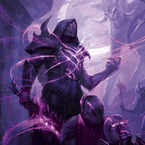The heroine known as Briar has made quite a splash since her arrival in Tales of Aria. Joining the ranks of fellow Runeblades Viserai and Chane, she differentiated herself immediately. While her brethren were engulfed in the darker side of aether via the Demonastary's rites and rituals, Briar aligns herself firmly with the natural order. She presents a brighter vision of what Runeblades can represent, when shaped by the beauty and peace of Aria.

I won't bore you with an in-depth discussion of her history- you can go read that straight from the source if you'd like- but it’s important to note this vast difference in upbringing, as it informs a difference in playstyle.
When Briar first debuted, the Runeblade players of the Flesh and Blood community were largely under the interpretation that her meta development would be a cakewalk. The Runeblade class has always been a split damage archetype- a handful of arcane annoyingly tossed in alongside a healthy dose of physical damage. Slowly but surely, we would come to find a different story altogether.
The Essence of Briar
Briar is no stranger to the dark arts of arcane, but is it her bread and butter? No. Can she make runechants? Yes. Does it benefit her? Not really.
Briar inherited a powerful suite of equipment from the Runeblades before her. Bloodsheath Skeleta and Grasp of the Arknight provided her with a fridge of armor to help mitigate oncoming damage. But does she utilize the effects of said equipment? Hardly.
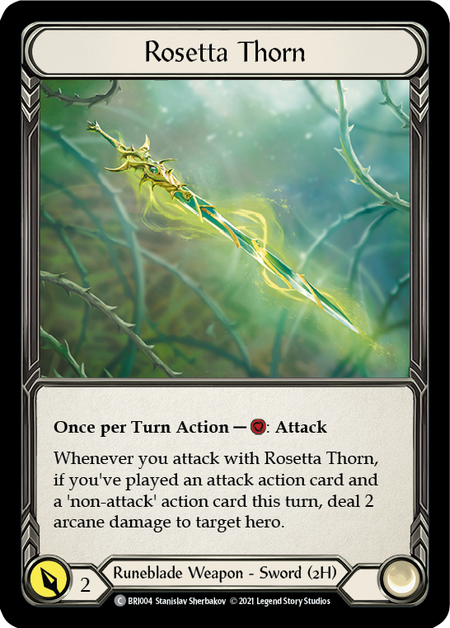
Briar brought with her the Rosetta Thorn, a weapon so well tailored to the core strategies of Runeblade that it was immediately adopted by Viserai and Chane as well. But its inherent ability to deal arcane damage was a red herring- in fact, Briar has seldom focused on maximizing her arcane output.
Instead, Briar turned our attention back to the dichotomy of the Runeblade class. It was the trigger for Rosetta- not the payoff- that served to guide us.
The Cheeri0s Meta
Runeblade decks maximize their efficiency through a precise blend of non-attack actions and attack actions. Briar has the incredible ability to produce an Embodiment of Lightning token whenever you play out your second non-attack action card during your turn.
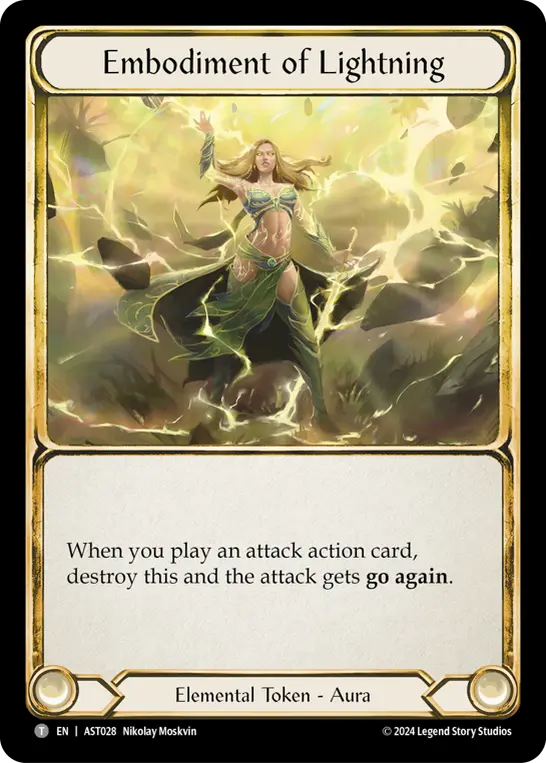
This token allows her to gain go again on the next attack action card played.
Most non-attack actions buff your attack action cards.
Stronger attacks with go again, you say? Yes please.
This newfound epiphany brought about the era of what would soon become known as “Cheerios Briar”: a mix of 0-cost Lightning and 0-cost generics, chosen for their 4-damage breakpoint. Typically, we are deterred from leaning heavily into generic cards by their lower average defense- but Briar's Embodiment of Earth tokens could, at the time, be stacked, transforming our non-attack actions into massive blocks that allowed us to keep most of our cards in hand.
Did she play like a Runeblade? Not at all.
Earth Crumbles
Initially, Cheerios Briar was nigh unstoppable. Heroes tried to find counters available within their own card pools, but it was an errata that finally cracked the earthen barrier. Briar's Essence of Earth became a once-per-turn effect, and that proved enough to make games against Cheerios Briar competitive again.
As opposing heroes became tired of enduring a barrage of non-stop damage, they found effective answers: arcane damage, frostbite, and detrimental on-hit effects that forced Briar to let cards go from her hand. The nature and construction of the cheerios build was not conducive to blocking or preventing damage; she simply could not afford to block effectively with a handful of red pitch cards that boast a pitiful 2 defense.
These hard counters to Briar caused many players to give up on her- though some (like myself) stayed committed to finding a way to keep her relevant.
Enter Channel Mount Heroic.
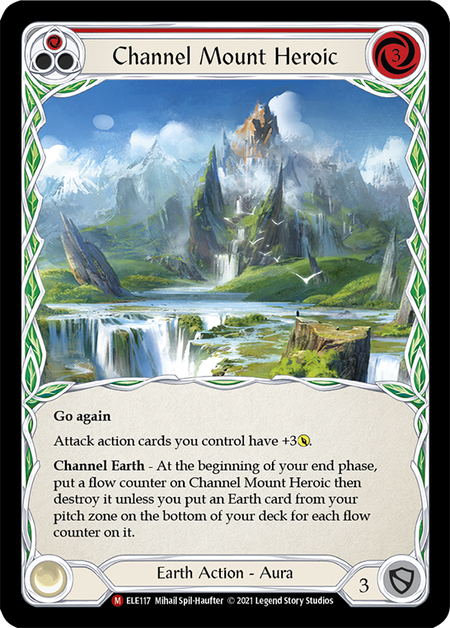
The View from Up Here
Mount Heroic found its home within the confines of a Briar deck. A 3-cost red pitch non-attack action was the furthest thing from the cheerios mentality; but with a little bit of creativity, a dash of skill, and heaps of determination, it wasn’t long before Briar was redefined once more.
The Channel Mount Heroic Briar deck (or CMH Briar) required a plethora of changes in order to function properly. Players were required to exchange many of their precious red buffs for blue-pitch Earth cards, which inherently slowed Briar down. The tradeoff solved some of our biggest problems; with the addition of blue pitch, she could now handle frostbite tokens and prevent arcane damage more effectively.
CMH Briar didn’t completely divert from her cheerios build. You can expect to find familiars such as Scar for a Scar, Snatch, Lightning Surge, Ravenous Rabble, and even the occasional Coax a Commotion. These attacks are critically important because Channel Mount Heroic gives +3 attack power to all attack actions on the combat chain during the entirety of your turn. Pair this with Everfest tools such as Swarming Gloomveil and Revel in Runeblood, and Briar begins to find her rightful place among the Runeblades.
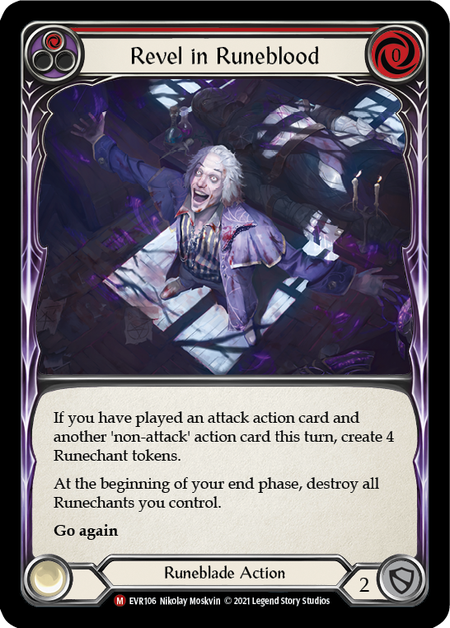
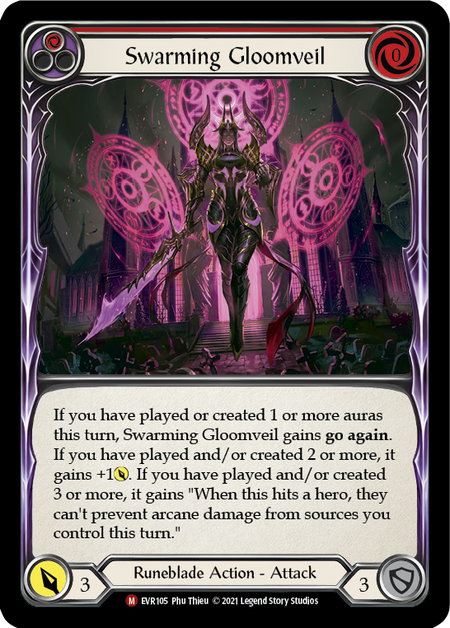
With the inclusion of Channel Mount Heroic, Briar was finally able to express her true nature. This semi-hybrid Earth/Lightning build widened her potential and allowed her access to one of the largest card pools in the game. But when you build your deck around a single card, the risk sometimes outweighs the reward. This deck requires the player to practice patience and plan each turn accordingly. You must keep track of your blue-pitch Earth cards not only to afford CMH when it finally comes into hand, but in order to keep it on the board as well.
At her core, has Briar really changed? She still wants to hit you multiple times each turn. She still packs plenty of non-attack actions to get go again. CMH Briar isn't quite as consistent as the cheerio build, but when she gets that Mountain into the arena, her opponents are forced to hand her the tempo.
Uprising Threat Assessment
Uprising, slated for release on June 24th, is the newest and most anticipated set since Tales of Aria. Without going into the details of every spoiler card we’ve seen thus far, a few questions emerge.
Will CMH Briar have what it takes to stand among the new heroes Dromai, Fai and Iyslander?
And if not, what changes are going to be required to do so?
Legend Story Studios has a strong desire to keep old heroes relevant in this non-rotating game design, but how do we do that?
We change our outlook on the meta and utilize the card pool as best we can.
At first glance Fai, a low-to-the-ground combat chain enthusiast, seems to run faster than CMH Briar. While CMH is the critical card for the pop-off turn, it may show itself too late and the damage dealt by Fai may be coming too quickly.
From what we know of Iyslander, she can give us frostbites and throw arcane damage at the same time- neither of which are new hurdles to overcome, but they come in the form of instant speed during our turn.
Dromai, the newset illusionist creates a boardstate of dragons, and that’s enough to worry any hero.
If I were to take a stab into the unknown, I would say that Briar is going to need to pick up the pace quite a bit. In this fast-paced meta, my gut is telling me that we may not have seen the last of cheerios Briar, and that Channel Mount Heroic may become a sideboard package instead. While we aren’t likely to be getting any new Elemental or Runeblade cards in this set, the best tech to take on the new heroes may come in the form of new generic cards.
Will Briar be forced into a new game state, revert to old ways or continue her reign as the heroine of Mount Heroic? Unfortunately, that question will remain unanswered until June 24th. With the overwhelming sensation of expecting the unexpected, I find comfort in the one thing I know for certain: Briar will remain as resilient as she’s proven in the past and won’t go down without a fight.


